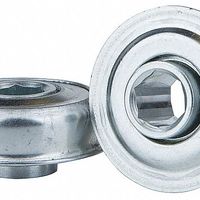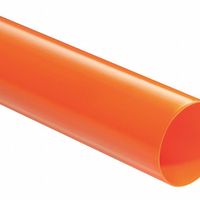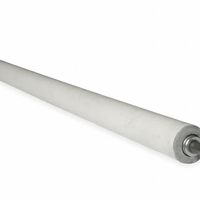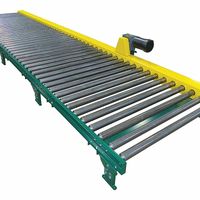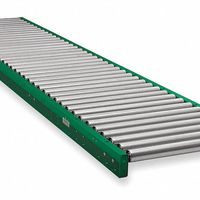Call +(254) 703 030 000 / 751 483 999 / 721 704 777
- Home
- Material Handling
- Transporting
- Conveyors Components
- Roller Conveyors Components
.....Read More
Frequently Asked Questions
What are the different types of roller conveyors?
Roller conveyors are material handling systems that use rollers mounted in frames to convey products. The different types include:
1. **Gravity Roller Conveyors**: Utilize the force of gravity to move items. They are simple, cost-effective, and require no power, making them ideal for moving lightweight items over short distances.
2. **Powered Roller Conveyors**: Use motors to drive the rollers, allowing for the movement of heavier items over longer distances. They are suitable for applications requiring controlled movement and speed.
3. **Line Shaft Roller Conveyors**: Feature a single motor that drives a series of rollers via a shaft and spools. They are efficient for light to medium loads and are often used in distribution and manufacturing environments.
4. **Belt-Driven Live Roller Conveyors**: Employ a belt to drive the rollers, providing a smooth and quiet operation. They are ideal for handling products with irregular bottoms or those that require precise control.
5. **Chain-Driven Live Roller Conveyors**: Use chains to drive the rollers, making them suitable for heavy-duty applications. They are often used in environments where the products are too heavy for belt-driven systems.
6. **Accumulation Roller Conveyors**: Designed to allow products to accumulate without pressure, preventing damage. They are used in applications where items need to be temporarily stopped or stored.
7. **Flexible Roller Conveyors**: Can be expanded, contracted, and curved to fit different spaces. They are portable and ideal for loading and unloading trucks or for temporary setups.
8. **Pallet Roller Conveyors**: Specifically designed to handle pallets. They are robust and can support heavy loads, making them suitable for warehouses and distribution centers.
Each type of roller conveyor is designed to meet specific needs, depending on the load, speed, and environment of the application.
How do you calculate the load capacity of a roller conveyor?
To calculate the load capacity of a roller conveyor, follow these steps:
1. **Determine Roller Specifications**: Identify the roller diameter, material, and wall thickness. These factors influence the roller's strength and deflection characteristics.
2. **Calculate Roller Deflection**: Use the formula for deflection, δ = (5 * W * L^3) / (384 * E * I), where W is the load per roller, L is the roller length, E is the modulus of elasticity of the roller material, and I is the moment of inertia. Ensure deflection is within acceptable limits to prevent damage.
3. **Assess Bearing Load Capacity**: Check the load capacity of the bearings used in the rollers. The bearing capacity should exceed the load per roller to ensure smooth operation.
4. **Determine Frame Strength**: Evaluate the conveyor frame's material and design to ensure it can support the total load. Consider factors like beam deflection and stress limits.
5. **Calculate Total Load**: Determine the total load the conveyor will carry, including the weight of the conveyed items and any additional forces (e.g., impact loads).
6. **Factor in Safety Margin**: Apply a safety factor (commonly 1.5 to 2) to account for unexpected loads or conditions.
7. **Check Roller Spacing**: Ensure roller spacing is appropriate for the load. Closer spacing increases load capacity by distributing weight across more rollers.
8. **Consider Environmental Factors**: Account for environmental conditions like temperature and humidity, which can affect material properties and load capacity.
9. **Consult Manufacturer Specifications**: Refer to manufacturer guidelines for specific load ratings and recommendations.
By following these steps, you can accurately determine the load capacity of a roller conveyor, ensuring safe and efficient operation.
What materials are roller conveyors made from?
Roller conveyors are typically constructed from a variety of materials, each chosen for specific properties that suit different applications. The most common materials include:
1. **Steel**: Steel is widely used for roller conveyors due to its strength, durability, and ability to handle heavy loads. It is often used in industrial settings where the conveyor must withstand significant wear and tear. Steel rollers can be galvanized or coated to resist corrosion.
2. **Stainless Steel**: Stainless steel is used in environments where hygiene is crucial, such as in food processing or pharmaceuticals. It is resistant to corrosion and easy to clean, making it ideal for applications that require frequent washdowns.
3. **Aluminum**: Aluminum is lightweight and resistant to corrosion, making it suitable for applications where weight is a concern or where the conveyor needs to be moved frequently. It is often used in packaging and light manufacturing.
4. **Plastic**: Plastic rollers are used in environments where noise reduction is important or where the conveyed materials are delicate. They are resistant to corrosion and chemicals, making them suitable for certain food and chemical applications.
5. **Rubber-Coated**: Rubber-coated rollers provide additional grip and cushioning, which is beneficial for handling fragile items or reducing noise. They are often used in packaging and assembly lines.
6. **PVC**: PVC rollers are lightweight and resistant to chemicals and moisture. They are often used in light-duty applications and environments where exposure to water or chemicals is a concern.
Each material offers distinct advantages, and the choice depends on factors such as load capacity, environmental conditions, and specific industry requirements.
How do you maintain and clean roller conveyors?
To maintain and clean roller conveyors, follow these steps:
1. **Regular Inspection**: Conduct routine checks for wear and tear, misalignment, and damage. Look for unusual noises or vibrations that may indicate issues.
2. **Cleaning**:
- **Surface Cleaning**: Use a soft brush or cloth to remove dust and debris from the rollers and frame. For stubborn dirt, use a mild detergent solution.
- **Deep Cleaning**: Periodically, remove rollers for thorough cleaning. Use a degreaser to eliminate grease buildup, then rinse and dry completely before reinstallation.
3. **Lubrication**: Apply appropriate lubricant to bearings and moving parts to reduce friction and prevent rust. Ensure the lubricant is suitable for the conveyor material and environment.
4. **Alignment**: Check and adjust the alignment of rollers to ensure smooth operation. Misaligned rollers can cause uneven wear and operational inefficiencies.
5. **Tension Adjustment**: Ensure that the conveyor belt tension is correct. Over-tensioning can cause excessive wear, while under-tensioning can lead to slippage.
6. **Component Replacement**: Replace worn-out or damaged rollers, bearings, and other components promptly to prevent further damage and maintain efficiency.
7. **Safety Checks**: Ensure all safety guards and emergency stops are functional. Regularly test these features to ensure they operate correctly.
8. **Documentation**: Keep a maintenance log detailing inspections, cleaning, lubrication, and repairs. This helps in tracking the conveyor’s condition and planning future maintenance.
9. **Training**: Ensure that staff are trained in proper operation and maintenance procedures to prevent misuse and extend the conveyor’s lifespan.
10. **Environment Control**: Keep the surrounding area clean and free of obstructions. Control environmental factors like humidity and temperature that may affect conveyor performance.
By following these steps, you can ensure the efficient operation and longevity of roller conveyors.
What are the advantages of using roller conveyors over other types?
Roller conveyors offer several advantages over other types of conveyors:
1. **Versatility**: Roller conveyors can handle a wide range of product sizes, shapes, and weights, making them suitable for various industries, including manufacturing, distribution, and packaging.
2. **Cost-Effectiveness**: They are generally less expensive to install and maintain compared to other conveyor systems, such as belt or chain conveyors, due to their simpler design and fewer moving parts.
3. **Energy Efficiency**: Gravity roller conveyors do not require power, reducing energy consumption and operational costs. Even powered roller conveyors are often more energy-efficient than other types.
4. **Scalability and Flexibility**: Roller conveyors can be easily expanded or reconfigured to accommodate changes in production lines or warehouse layouts, offering flexibility for growing businesses.
5. **Durability and Low Maintenance**: Made from robust materials, roller conveyors are durable and require minimal maintenance, leading to reduced downtime and lower long-term costs.
6. **Smooth and Gentle Handling**: They provide smooth and gentle handling of products, minimizing the risk of damage, which is crucial for fragile or delicate items.
7. **Ease of Installation**: Roller conveyors are relatively easy to install and integrate into existing systems, reducing setup time and disruption to operations.
8. **Customizability**: They can be customized with various roller materials, sizes, and configurations to meet specific operational needs, such as handling corrosive materials or operating in extreme temperatures.
9. **Safety**: With fewer moving parts and lower operational speeds, roller conveyors pose less risk of injury to workers compared to other conveyor types.
10. **Reduced Noise Levels**: They typically operate more quietly than chain or belt conveyors, contributing to a more pleasant working environment.
These advantages make roller conveyors a popular choice for many applications, providing efficient and reliable material handling solutions.
How do you install a roller conveyor system?
1. **Planning and Design**: Determine the layout, length, and width of the conveyor system. Consider the load capacity, speed, and type of rollers needed. Ensure the design fits the available space and meets operational requirements.
2. **Site Preparation**: Clear the installation area of any obstructions. Ensure the floor is level and capable of supporting the conveyor system. Mark the layout on the floor for accurate placement.
3. **Gather Tools and Materials**: Collect necessary tools such as wrenches, screwdrivers, measuring tape, and level. Ensure all conveyor components, including frames, rollers, supports, and hardware, are available.
4. **Assemble the Frame**: Begin by assembling the conveyor frame according to the manufacturer's instructions. Connect the side frames using cross braces and secure them with bolts.
5. **Install Supports**: Position the conveyor supports or legs at regular intervals along the frame. Adjust the height to ensure the conveyor is level. Secure the supports to the floor if required.
6. **Attach Rollers**: Insert rollers into the frame, ensuring they are evenly spaced and aligned. Secure them with the appropriate hardware. Check that rollers rotate freely.
7. **Install Drive Mechanism**: If the conveyor is powered, install the drive mechanism, including motors and belts, according to the manufacturer's instructions. Ensure proper alignment and tension.
8. **Safety Features**: Install safety features such as guards, emergency stop buttons, and warning signs. Ensure all safety measures comply with local regulations.
9. **Testing and Adjustment**: Test the conveyor system by running it with a load. Check for smooth operation, alignment, and any unusual noises. Make necessary adjustments to ensure optimal performance.
10. **Maintenance Plan**: Establish a regular maintenance schedule to inspect and service the conveyor system, ensuring longevity and efficiency.
What industries commonly use roller conveyors?
Roller conveyors are widely used across various industries due to their efficiency in transporting goods and materials. Key industries that commonly utilize roller conveyors include:
1. **Manufacturing**: In manufacturing plants, roller conveyors are used to move raw materials, components, and finished products between different stages of production, assembly lines, and packaging areas.
2. **Automotive**: The automotive industry employs roller conveyors for transporting car parts and assemblies through different stages of production, including painting, assembly, and inspection.
3. **Food and Beverage**: Roller conveyors are used in food processing plants for moving products through different processing stages, packaging, and distribution, ensuring hygiene and efficiency.
4. **Warehousing and Distribution**: In warehouses and distribution centers, roller conveyors facilitate the movement of goods from storage areas to shipping docks, improving order fulfillment speed and accuracy.
5. **Retail**: Retail distribution centers use roller conveyors to sort and transport products for order picking and packing, enhancing the efficiency of supply chain operations.
6. **E-commerce**: E-commerce fulfillment centers rely on roller conveyors to handle high volumes of packages, streamlining the sorting and shipping processes.
7. **Pharmaceutical**: The pharmaceutical industry uses roller conveyors to transport medicines and medical supplies through production, packaging, and distribution stages, maintaining product integrity.
8. **Logistics and Freight**: Logistics companies use roller conveyors in sorting facilities to handle parcels and freight efficiently, reducing manual handling and improving throughput.
9. **Mining and Quarrying**: In mining operations, roller conveyors transport extracted materials like coal, ores, and aggregates, facilitating efficient material handling.
10. **Aerospace**: The aerospace industry uses roller conveyors for moving large and heavy components during assembly and inspection processes.
These industries benefit from the versatility, durability, and cost-effectiveness of roller conveyors, which can be customized to meet specific operational needs.
